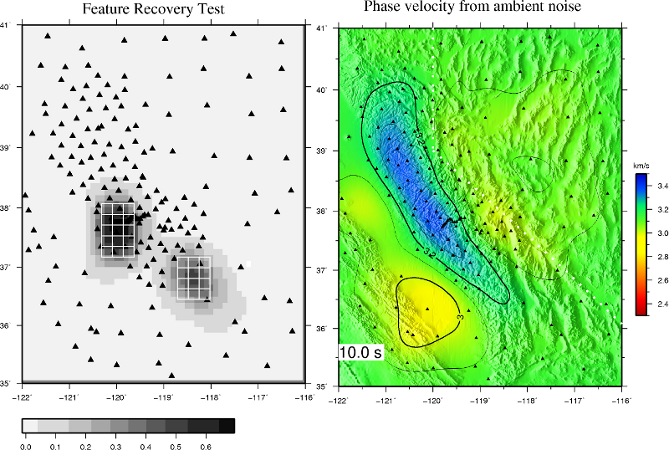
Preliminary shear velocity model from inversion of phase velocity
dispersion measurements from ambient noise cross correlations (4-40 s)
and two-plane wave analysis of teleseismic earthquakes (20-100
s, courtesy of Hersh Gilbert). The SNEP dataset has provided great results in comparison to
others I have analyzed. This is the only dataset where the input
starting model does not have a priori constraints on crustal thickness,
yet upon inversion a Moho gradient is evident that is very sharp on the
east side and less sharp on the west. This is largely due to the
increased resolving power associated with the dense interstation
spacing. PDF files for all images available below. Figure to left is a regional map showing stations and cross section locations. PDF 2.1MB












